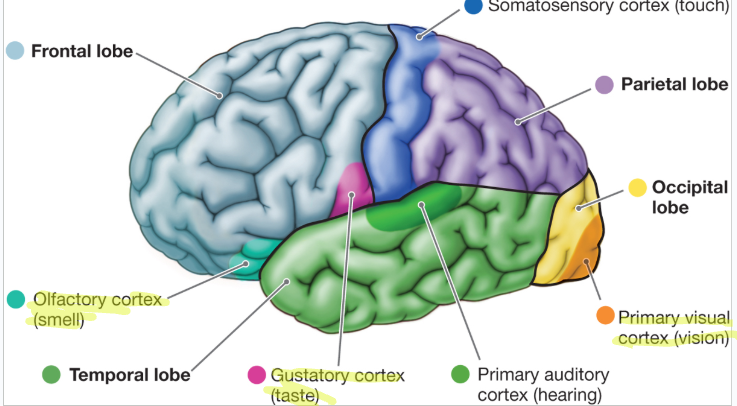Neuroscience/Mental Health: Slides 98-124
What is Cranial Nerve I and its function & results of lesion?
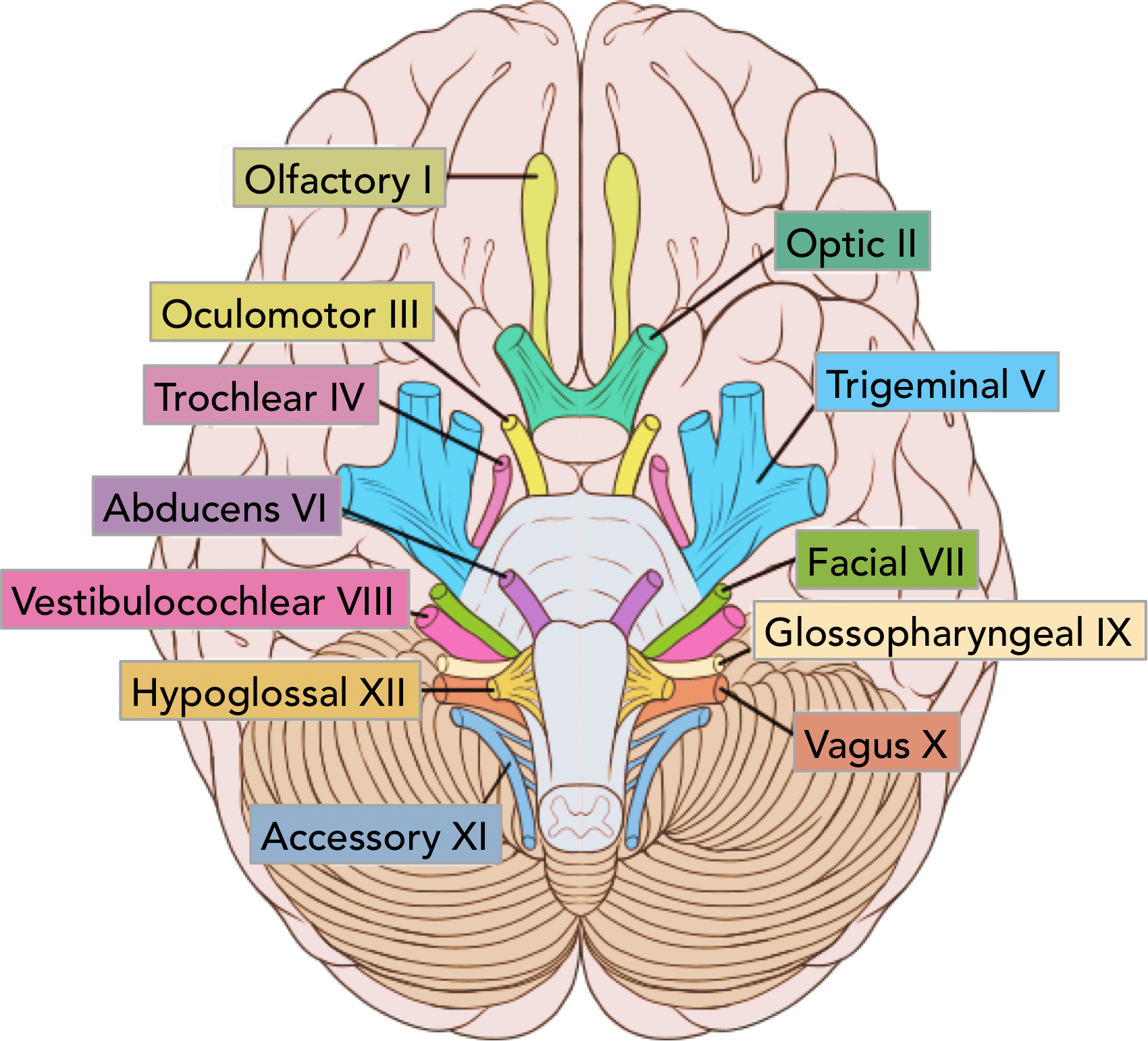
Name: Olfactory Nerve
Function: sense of smell
Results of lesion: Anosmia
***Know where it’s located —>
What is Cranial Nerve II and its function & results of lesion?

Name: Optic Nerve
Function: ability to see
Results of lesion: Anopsia, loss of light reflex
***Know where it’s located —>
1/7
Earn XP
Description and Tags
Identify/ Label CN I-VI in a picture. Identify/ Label areas of the brain where sensory information is processed in a picture. Describe functions of CN I-VI and lesions. **Alzheimers not on quiz**
Name | Mastery | Learn | Test | Matching | Spaced |
|---|
No study sessions yet.
8 Terms
What is Cranial Nerve I and its function & results of lesion?
Name: Olfactory Nerve
Function: sense of smell
Results of lesion: Anosmia
***Know where it’s located —>

What is Cranial Nerve II and its function & results of lesion?
Name: Optic Nerve
Function: ability to see
Results of lesion: Anopsia, loss of light reflex
***Know where it’s located —>

Describe changes in pupil size:
Anisocoria: 1 large, 1 small
Mydriasis: both dilated
Miosis: Both constricted

What is Cranial Nerve III and its function & results of lesion?
Name: Oculomotor nerve
Function: Ability to move and blink the eyes
Results of lesion: double vision, loss of light reflex
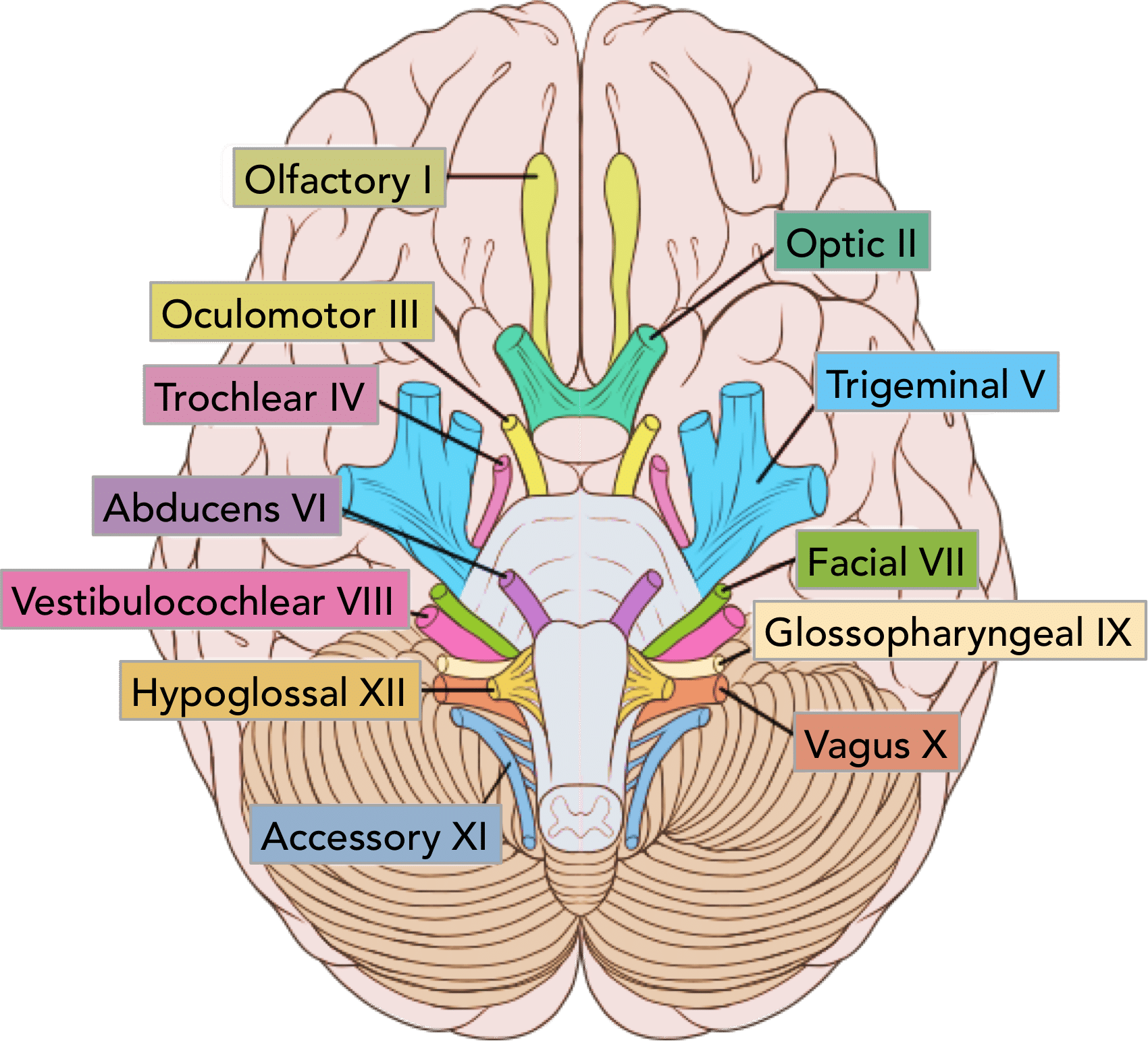
What is Cranial Nerve IV and its function & results of lesion?
Name: Trochlear nerve
Function: Ability to move your eyes up and down or back and forth
Results of lesion: Trouble going down stairs
Head tilts away from the lesioned site
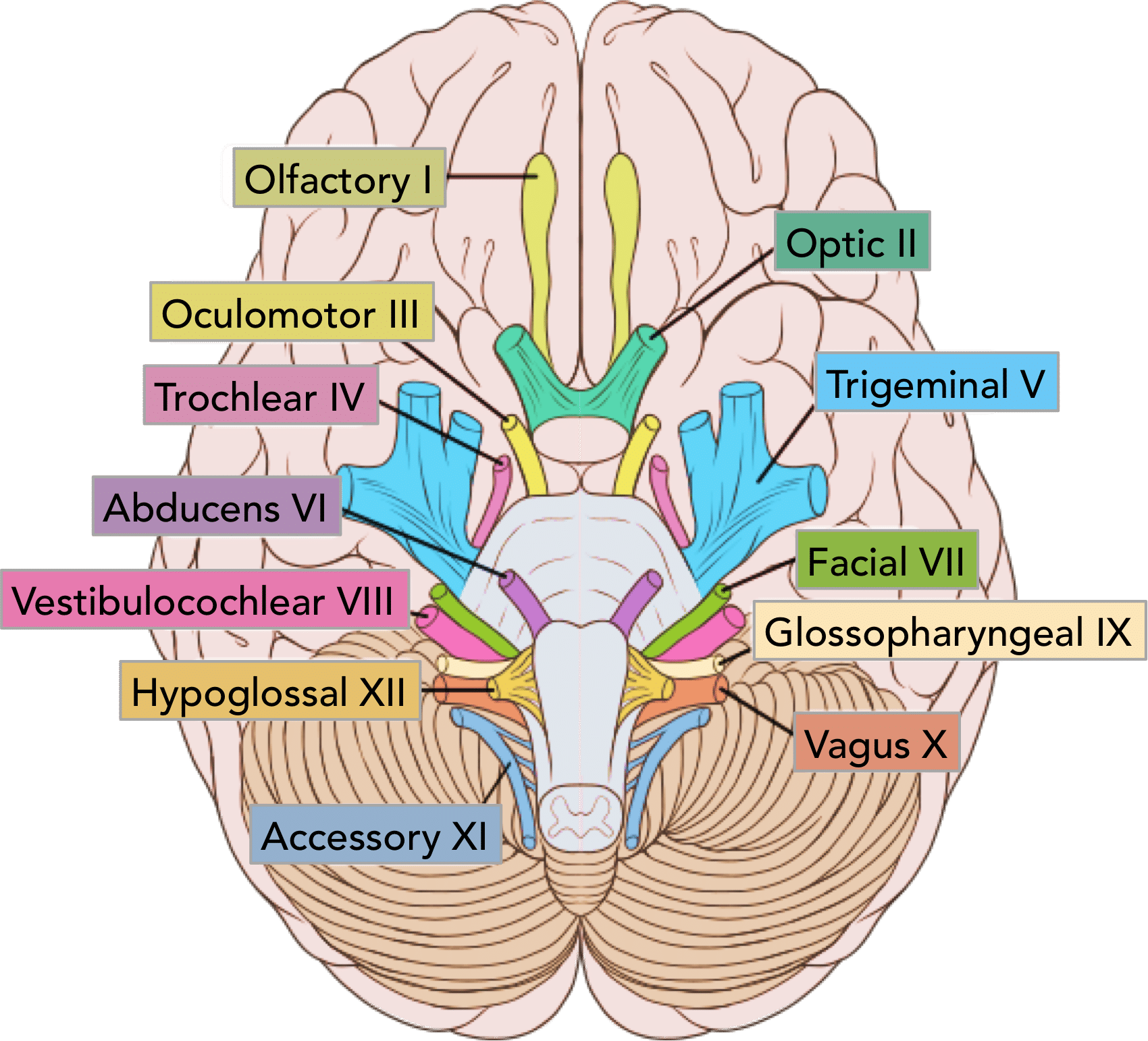
What is Cranial Nerve V and its function & results of lesion?
Name: Trigeminal nerve
Function:
V1 (Ophthalmic) Touch, pain, and temperature sensations of the forehead/ scalp/ cornea
V2 (Maxillary) Touch, pain, and temperature sensations of cheeks, maxillary teeth, nasal cavity, palate
V3 (Mandibular) ⅔ of tongue and jaw movements
Results of lesion: Loss of blink reflex, ageusia (loss of taste), weakness in chewing, jaw deviation
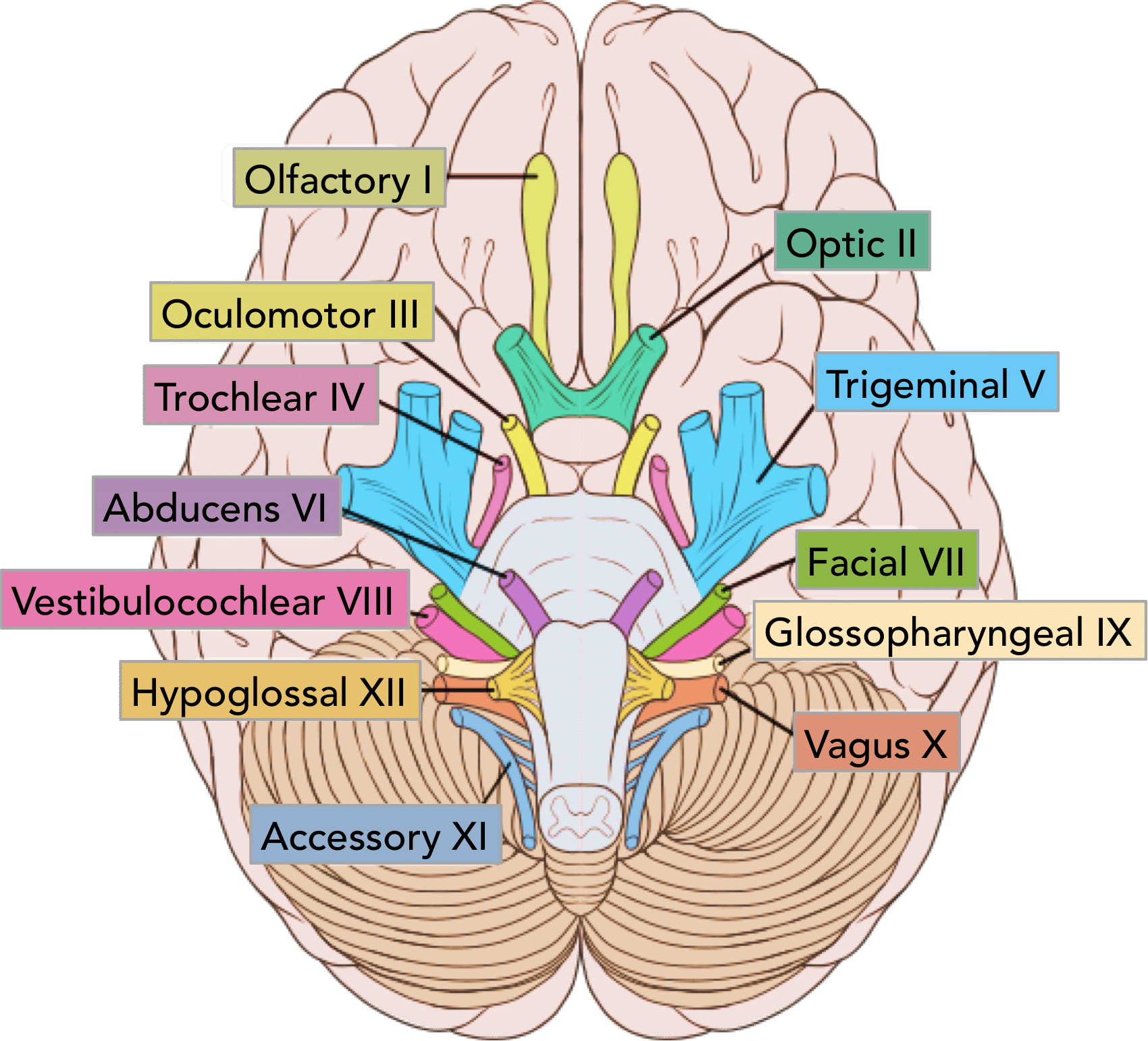
What is Cranial Nerve VI and its function & results of lesion?
Name: Abducens
Function: Outward eye movement
Results of lesion: Double vision
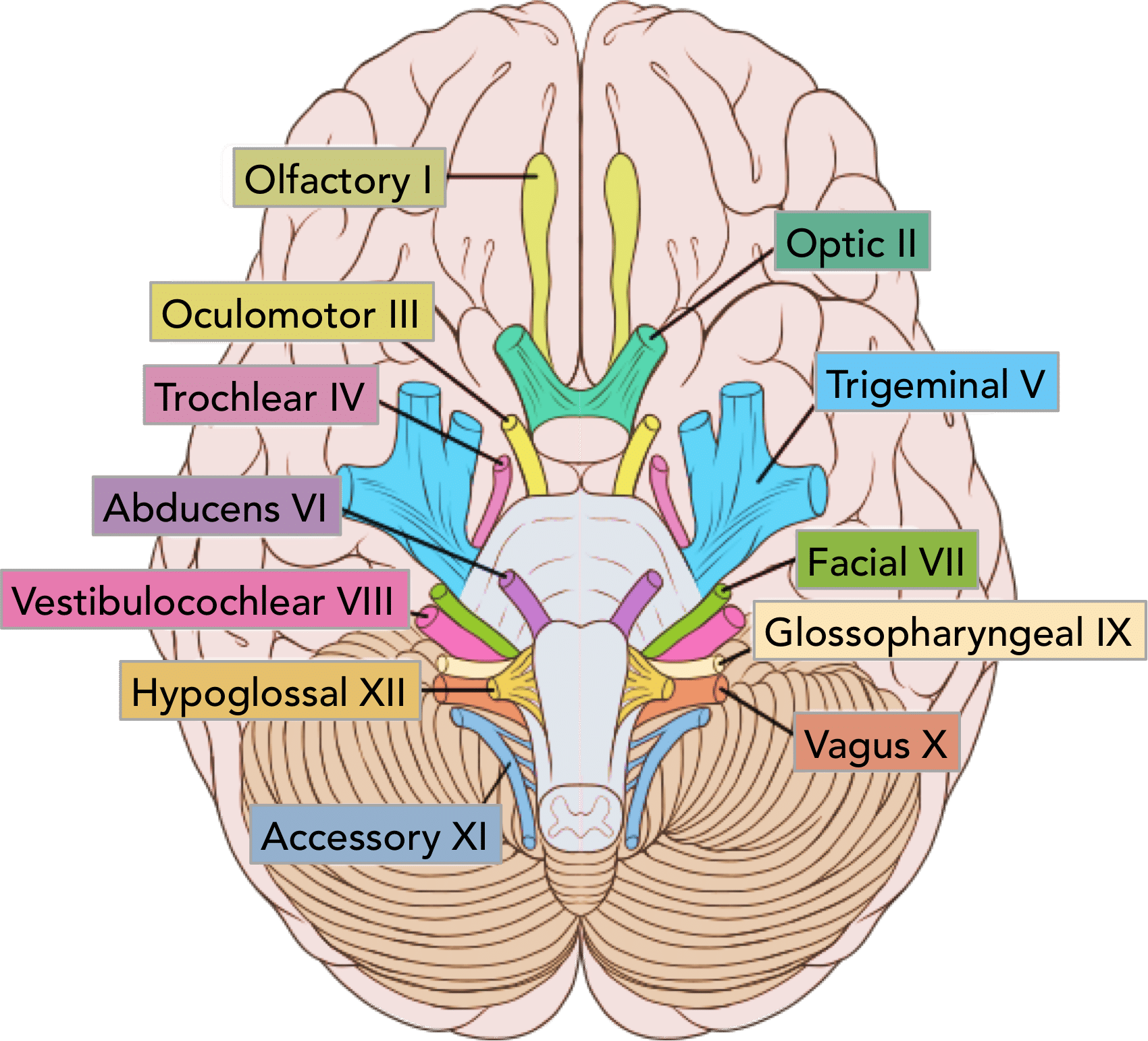
Identify/ Label areas of the brain where sensory information is processed in a picture:
Know the highlighted areas in the picture and be able to label their location and function:
